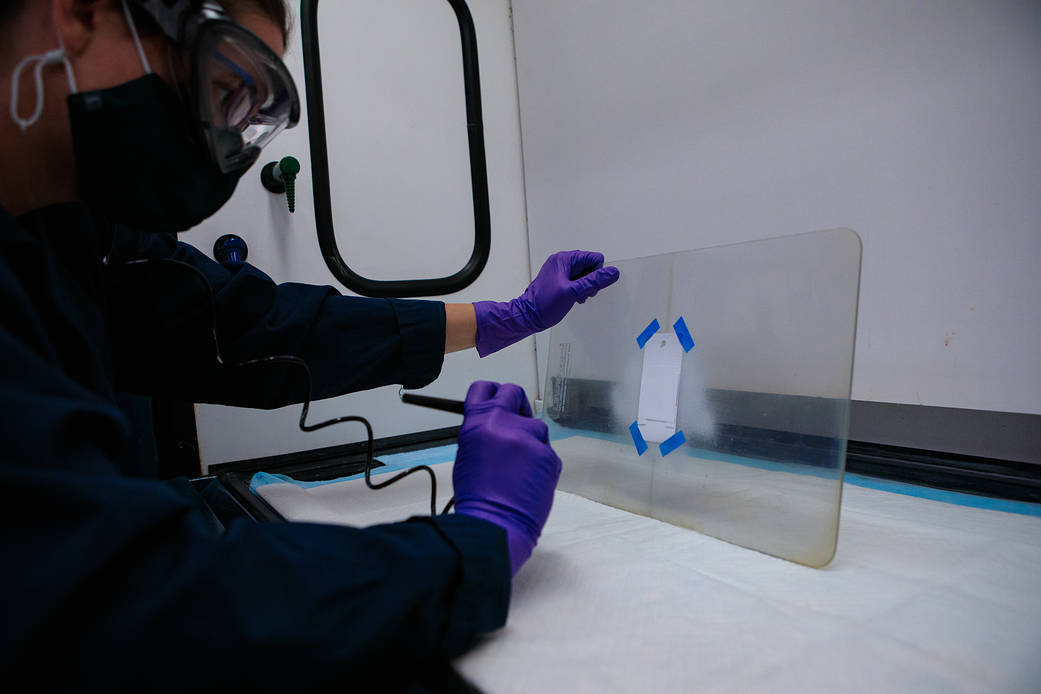Inside a laboratory at the Neil Armstrong Operations and Checkout Building at NASA’s Kennedy Space Center in Florida, research scientist Sarah Snyder applies a selective surface coating to an Electrodynamic Dust Shield (EDS) on March 31, 2021. This is one of several concurrent activities preparing dust shield samples for testing in space. Dust mitigation technologies could one day be applied to diminish dust hazards on lunar surface systems such as cameras, solar panels, spacesuits, and instrumentation, enabling sustainable exploration of the Moon under the Artemis program.
NASA is researching EDS technology in its Electrostatics and Surface Physics Lab, led by scientist Dr. Carlos Calle, senior principal investigator. The EDS technology uses dynamic electric fields to remove dust from surfaces – in this case, minimizing the dust’s ability to cover up and reduce the effectiveness of the solar-reflective coating.
The selective surface coating, developed by Kennedy researchers Dr. Robert Youngquist and Dr. Mark Nurge, reflects up to 99.7% of the Sun’s energy. The coating’s transparent broadband material scatters most of the Sun’s radiation, from ultraviolet/visible, near- to mid-infrared, and long-wave radiation. Under that layer is a metallic reflector, which reflects long-wave radiation that is not well scattered. This technology will allow non-heat-generating objects in space to reach cryogenic temperatures without using an active cooling system and should have applications as NASA explores the Moon, Mars, and beyond.
NASA’s Space Technology Mission Directorate, through the Lunar Surface Innovation Initiative, is developing and demonstrating dust mitigation, selective surface coatings, and other transformative technologies to enable future NASA missions and provide technology solutions to benefit humankind on Earth and in space.
Photo credit: NASA/Isaac Watson




























